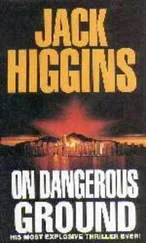He checked the battery gauge and tried to do the math. Fifteen knots wasn’t flat out, but it would burn more of the Manta’s battery endurance than he’d like. Every minute he spent at fifteen knots now was good for eight or ten at creep speed.
But dammit, he had to know if it was working or not? Where were those four patrol boats that had attacked them earlier? He requested control to ask sonar for their status.
“U-bay, sonar. We’re on the line with you now. The four boats are astern of us, maneuvering and pinging. Our guess is they’re executing a search pattern at the site of our last attack. We think those were S3V depth charges, by the way. There was no torpedo noise at all before the explosions. They’re dropped from an aircraft, probably a Bear or a May patrol plane. They’re also passive homing, so we’ve got to stay quiet.”
“Sonar, U-bay aye. And if the Manta makes too much noise, it will be an easy target for them.” Jerry then added, “Thanks for the update.”
Now centered in the trench, Jerry turned the Manta in a complete circle before heading north, trying to create a “knuckle” in the water. A mass of disturbed water, a knuckle could reflect active sonar pulses. Normally subs made gentle turns so they wouldn’t create a knuckle, but not this time. He’d hang lights on it if he could.
Jerry also reduced the Manta’s speed to five knots, both to save the battery and because that’s what a real sub would do.
“Conn, U-bay. How many of those depth charges does a plane carry?”
The control room talker said, “U-bay, conn. Wait one.” A minute later he relayed, “If depends on the sonobuoy and torpedo loadout. A Bear Foxtrot can carry up to twelve. A May can carry ten.”
“Conn, U-bay aye. Thanks.” And that’s per airplane. Wonderful.
Hardy came on again. “Mr. Mitchell, I’m turning Memphis to zero three zero now.”
“Yessir. How long will it take before we know if this is working or not?” Jerry hated to ask, but the question nagged at him.
“As long as they don’t attack Memphis, it’s working, mister. Just keep doing what you’re doing. I’m sure you can make it work.”
Jerry was so surprised he didn’t answer. Hardy, encouraging him? Now he was really worried.
“Conn, sonar. More explosions to the west. They might be more ranging charges.” As sonar made its report, the Manta’s sonar display also showed the sound spike. It showed a detonation ahead and to starboard of the Manta. He fed the bearing from the Manta’s detection to control, where they plotted both lines on the chart.
The talker sounded almost happy. “U-Bay, conn. Plot confirms the explosions are in the trench, and the strength is right for an echo-ranging charge.”
Jerry felt relieved for Memphis, but paternal concern for the UUV. Anything that could hurt Memphis would kill the Manta very quickly, which would end its job as a decoy. It would also deprive the American taxpayers of several millions of dollars’ worth of high-tech prototype. And the wreckage would be in shallow water, easily recoverable.
Time to wiggle, he decided. Jerry turned the Manta toward the last explosion and changed his depth, bringing the Manta up. That should make it easier to distinguish from the seabed.
Another ranging charge showed up on the Manta’s display and sonar also reported the blast. This one was behind and to starboard, but Jerry turned the Manta to port, as if he was trying to get away from the spot. He also told the Manta to go deeper, but not all the way to the bottom.
A third charge followed in quick succession, this time ahead of the Manta, and Jerry increased speed to eight knots. The idea was to convince them they had a live target, but not to actually become one. And the longer it took, the better.
“U-bay, conn. The tracking party thinks the patrol boats are headed west, toward the trench and the Manta. The Captain’s increasing speed to six knots, but says you’re supposed to keep them busy as long as you can.”
“U-bay, conn aye.” A fourth charge exploded to the aft of the Manta, but close aboard, to judge by the signal strength on the display. He was trying to figure out which way to zig when the passive sonar picked up a new sound.
“Conn, sonar, I’ve got a torpedo in the water to our west!” Jerry had never seen a torpedo on the Manta’s passive display, but instantly agreed with the sonar operator’s call. It was a perfect drop from the Russians’ point of view, ahead and to port. As the torpedo turned to starboard to begin its search pattern, the Manta would be dead ahead.
Jerry told the Manta to release an ADC Mk 3 torpedo countermeasure, then kicked the UUV hard to port. He was already at eight knots, not enough to get out of the area quick enough, so he ordered the Manta to maximum, twenty knots, quickly computing how long he could head west across the trench at that speed.
His one advantage was the maneuverability of the Manta. It was as maneuverable as a torpedo, and if he could get behind the torpedo and stay there, the weapon would never pick him up. Of course, as soon as this one ran out of fuel, they’d drop another, but first he had to live through this one.
He watched the torpedo’s bearing on the Manta’s display, trying to guess its course and how far it was from the vehicle. As quickly as he could, Jerry slowed the UUV and turned it toward the torpedo, attempting to stay behind its seeker cone.
Along with the noise of the torpedo’s engine, he could also detect the active seeker, pinging at high frequency. The rate of the pinging was important, because as long as the pings were widely spaced, the weapon was in search mode. If the ping rate increased, that meant the torpedo had found something and was taking a harder look.
As Jerry maneuvered, he kept up a running commentary to control, telling them what the Manta was seeing and what he was planning. For the most part, control didn’t answer, aside from an occasional “U-bay, conn aye.”
For almost a minute, the bearing continued moving to the right and Jerry chased it, taking the Manta in almost a full circle. He tried to visualize the position of the two as they circled a common point. While he could see where the torpedo was, in relation to the Manta, he could only guess at where the torpedo was headed, which would help tell him where the seeker cone was — and whether or not he was in it.
Finally he seemed to catch up, the bearing to the torpedo changing less and less until he almost went past it and had to quickly correct, all the while dealing with the growing time lag as the Manta increased her distance from Memphis.
The torpedo bearing remained steady for a few moments, and Jerry saw that it was headed south, probably toward the countermeasure he’d dropped. Turning as tightly as he could, he commanded the Manta north again. Hopefully he could get some separation before it sorted out the decoy and went into a circular reattack search pattern.
North, always north. That’s what a real sub would do: try to reach the northern exit of the Kara Sea and get out of this geographic bear trap. He wanted the Russians to think that as well. And as long as he kept going north, he’d be running parallel with Memphis and wouldn’t have to worry about getting beyond control range. Still, the time lag was already a major factor.
The torpedo remained to the south, and Jerry heard it switch to a higher ping rate. The countermeasure had worked, then. Jerry adjusted the Manta’s depth, putting about one hundred and fifty feet between the UUV and the seabed. If they started echo-ranging again, he wanted to stand out from the bottom. He kept his speed low, at five knots.
It took five minutes for the weapon to run out of fuel. They couldn’t drop another weapon until the first torpedo stopped, and he used the time to get some distance behind the Manta. It was also another five minutes’ grace for Memphis as she headed northeast.
Читать дальше












